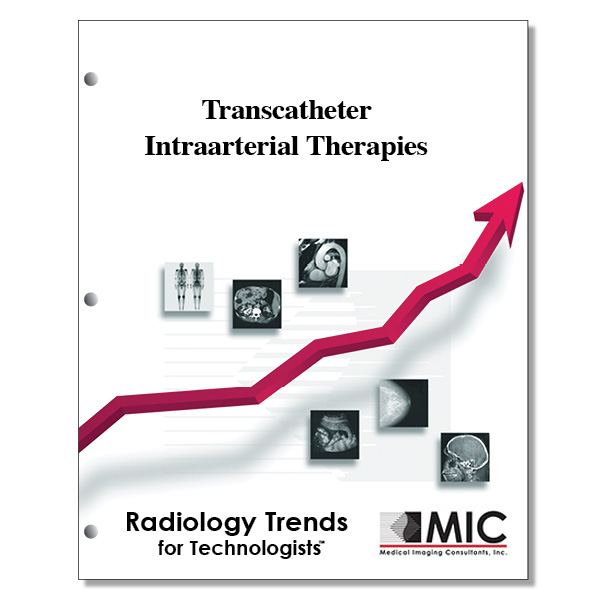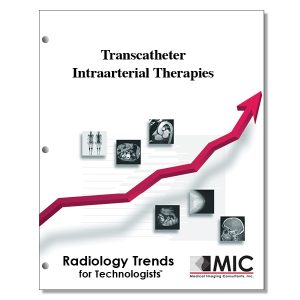

Transcatheter Intraarterial Therapies
An overview of and the rationale behind several transcatheter therapies.
Course ID: Q00332 Category: Radiology Trends for Technologists Modalities: Radiography, Vascular Interventional3.5 |
Satisfaction Guarantee |
$37.00
- Targeted CE
- Outline
- Objectives
Targeted CE per ARRT’s Discipline, Category, and Subcategory classification for enrollments starting after June 11, 2024:
[Note: Discipline-specific Targeted CE credits may be less than the total Category A credits approved for this course.]
Registered Radiologist Assistant: 1.75
Procedures: 1.75
Abdominal Section: 1.75
Vascular-Interventional Radiography: 1.75
Procedures: 1.75
Vascular Interventional Procedures: 1.75
Outline
- Introduction
- Technical Considerations
- Transarterial Embolization
- Background
- Clinical Evidence
- Intraarterial Chemoinfusion
- Background
- Clinical Evidence
- Transarterial Chemoembolization
- Background
- Clinical Evidence
- Drug-eluting Microspheres
- Background
- Clinical Evidence
- 90γ Radioembolization
- Background
- Clinical Evidence
- Comparison of Transcatheter Therapies
- Future Directions
- Background
- Combined Approaches
- Advances in Therapeutics
- Advances in Imaging
- Advances in Assessing Response to Therapy
- Conclusion
Objectives
Upon completion of this course, students will:
- understand the types of transcatheter transarterial therapies
- be aware of how chemoembolization emerged as a standard of care
- discuss how radioembolization has emerged over the past decade
- know the source of hepatic blood supply
- discuss why transcatheter intraarterial therapy works well for liver cancer
- understand the importance of hepatic anatomy
- know what procedure can be used to reduce adverse effects from transarterial chemoembolization
- be familiar with embolizing agents used in transarterial embolization therapy
- define a retrospective approach in clinical studies
- be familiar with patient survival rates for transarterial embolization
- understand which types of liver metastasis can be treated with transarterial embolization
- know that bleeding can be treated with transcatheter arterial embolization
- understand how regional drug therapy increases concentration of drugs
- define in vivo
- understand who performs the procedure to place arterial catheters
- know the intended purpose of tumor embolization
- describe patient populations that can benefit from transarterial chemoembolization
- describe how drug-eluting beads are delivered to the tumor
- understand TACE
- know symptoms of postembolization therapy
- discuss the first study regarding drug-eluting beads
- know if drug-eluting bead therapy is safe and effective for all cancer patients
- understand symptoms of clinical syndrome
- discuss radioembolization
- understand which transarterial therapies provide the least risk of hepatic necrosis
- discuss clinical studies regarding time to cancer progression
- discuss the Marelli et al study and which therapies the study compared
- know what type of drug doxorubin is
- know what type of lab animals are used to research transcatheter therapy
- be familiar with the future of transcatheter therapy research
- know the sizes and types of tumors that can be treated with intraarterial therapy
- know how the metabolism of a tumor is affected by transcatheter therapy
- know what makes digital subtraction angiography limited in transcatheter therapy
- know what superselective radioembolism is
- discuss the combined imaging technologies that assist with repositioning hepatic arterial catheters
- know when follow up imaging is performed after cancer treatment
- discuss functional imaging
- understand agencies that provide radiologic tumor measurement guidelines
- know what types of hepatic malignancies have been treated successfully with transcatheter intraarterial therapy
- understand invasive level of transcatheter therapy
